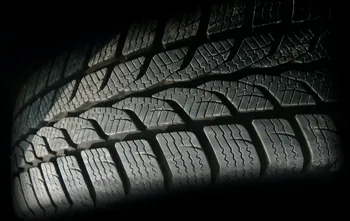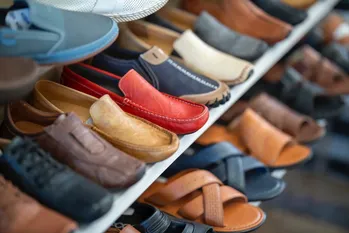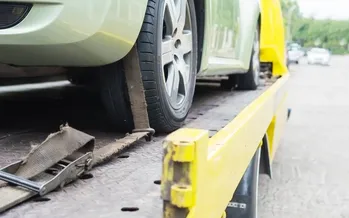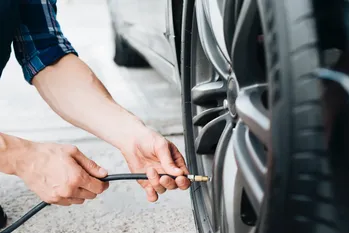When it comes to maintaining your car, tires are one of the most essential components that require regular attention. They're also one of the priciest items you'll spend money on for your vehicle, making it crucial to find ways to save some cash without compromising safety or longevity. Here's a step-by-step guide to help you maximize tire savings:
Understanding Tire Maintenance
Importance of Tire Maintenance
Maintaining your tires is essential for their long-term durability and safety on the road. Regular maintenance can also prevent unnecessary wear, making your tires last longer, saving you money in the long run.
Common Signs of Tire Wear and Damage:
Uneven Tread Depth: If you notice that your tire's tread depth is uneven or worn down on one side, it could be a sign of alignment issues. This can lead to further wear and tear and potentially require more frequent replacements.
Cracks or Bulges: If you see cracks or bulges in the sidewall of your tire, it may indicate an internal or external issue that requires professional attention. Don't ignore these signs as they could pose a safety hazard on the road.
Flat Spots: A flat spot on your tire can result from sudden stops or overloading your vehicle. This area wears down more quickly than the rest of the tire, leading to irregular wear and potentially needing replacement sooner.
Tips for Proper Tire Inflation and Rotation:
Check Tire Pressure Regularly: Underinflated tires can cause excess wear and tear, decreasing longevity. Ensure you check your tires' pressure at least once a month, using an accurate gauge to maintain proper inflation levels.
Rotate Your Tires: Rotating your tires every 6,000 to 8,000 miles can help them wear more evenly, reducing the need for replacements. Consult your owner's manual or a trusted tire specialist for recommendations on when and how to perform this task.
Shopping for Tires
How to Compare Prices Between Different Stores:
Research Online: Before heading out, search for tires online to compare prices between various retailers in your area. Be sure to check any additional fees or discounts that may apply.
Check Sale Events: Keep an eye on sales and promotions from local tire stores to take advantage of seasonal discounts or clearance items.
Tips for Finding Sales and Discounts:
Look Out For Coupons: Many retailers offer coupons through their websites, social media pages, or printed flyers. Don't forget to bring them along when shopping for tires.
Sign Up for Email Newsletters: Some stores send exclusive offers and discounts to their email subscribers, providing additional savings opportunities.
Strategies for Negotiating Prices with Retailers:
Shop Around: Don't settle for the first price you hear. Visit multiple tire stores in your area to compare prices and negotiate a better deal based on their competition.
Haggle for Better Deals: Don't be afraid to ask for a lower price or additional discounts, especially if you're buying multiple tires at once. Be polite but persistent in your negotiations.
DIY Tire Care
Benefits of Doing Some Tire Maintenance Yourself:
Cost-Effective: By performing regular tire maintenance tasks yourself, such as cleaning and inspecting your tires, you can save money on professional services.
Increased Knowledge: Learning about tire care can help you identify potential issues before they become major problems, allowing for more cost-effective solutions in the long run.
Common Do-It-Yourself Tire Repairs:
Patch a Small Hole: If you notice a small hole or puncture on your tire, use a tire patch kit to fix it temporarily until you can replace the tire.
Check for Weak Spots: Use a flashlight to inspect the sidewall of your tires for any cracks or weaknesses that may require immediate repair or replacement.
Additional Tips for Maintaining Tire Health:
A. Avoid Overloading Your Vehicle: Be aware of how much weight your vehicle can safely carry to avoid excess wear and tear on your tires.
B. Drive Smoothly: Sudden stops, harsh acceleration, and sharp turns can cause excess wear and tear on your tires, leading to premature replacement needs.
C. Inspect Your Tires Regularly: Take time to regularly inspect your tires for signs of damage or wear, including checking the tread depth (less than 2/32 inch is a sign of needing replacement).
FAQ Section:
Q: How often should I check my tire pressure?
A: You should check your tire pressure at least once a month, using an accurate gauge to maintain proper inflation levels. If you live in a particularly hot or cold climate, it's best to check your tires more frequently.
Q: When should I rotate my tires?
A: It's recommended that you rotate your tires every 6,000 to 8,000 miles, but you can consult your owner's manual or a trusted tire specialist for specific recommendations based on your vehicle's make and model.
Q: How do I know if my tires need replacing?
A: Your tires may need replacement if they have less than 2/32 inch of tread depth, showing signs of damage such as cracks or bulges, or if they are over six years old (even if the tread is still deep). It's also important to replace your tires if you notice any uneven wear or irregularities in the tire pattern.
Q: How can I find the best deals on tires?
A: To find the best deals on tires, it's recommended that you research prices online and compare them between different retailers in your area. Be sure to also check for coupons, sales, and promotions offered by local tire shops or through the manufacturers themselves. Additionally, consider purchasing tires during the offseason or during holiday weekends when stores may offer special discounts.
Q: How can I avoid excess wear and tear on my tires?
A: To avoid excess wear and tear on your tires, try to drive smoothly rather than making sudden stops, harsh accelerations, or sharp turns. Avoid overloading your vehicle with more weight than it's designed to carry, as this can also cause premature tire wear. Additionally, try to park in a shaded area to minimize exposure to the sun and heat, which can contribute to rapid tire aging and wear. Finally, consider using a spare or temporary spare tire if you must drive on damaged roads or surfaces that may damage your tires.
Conclusion:
By implementing these tips and strategies for tire care, maintenance, and shopping around, you can reduce costs and prolong the life of your tires, saving you money in the long run while ensuring safety on the road. Remember to always prioritize your safety by regularly inspecting your tires and addressing any issues promptly.











